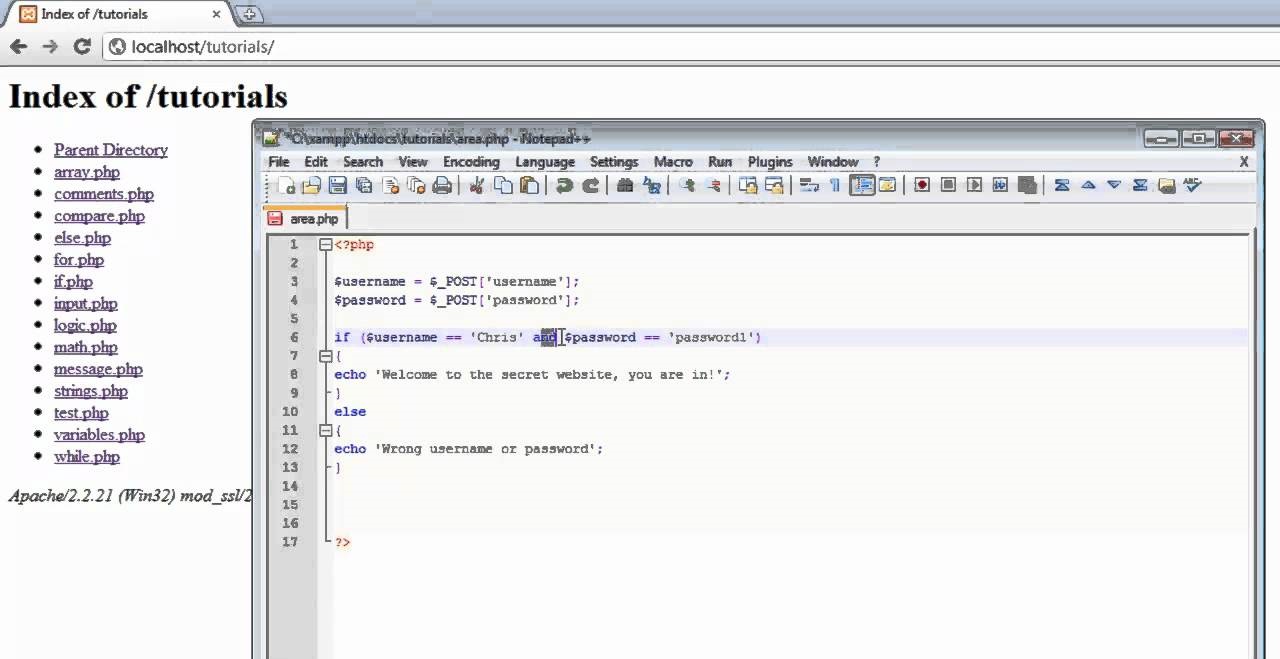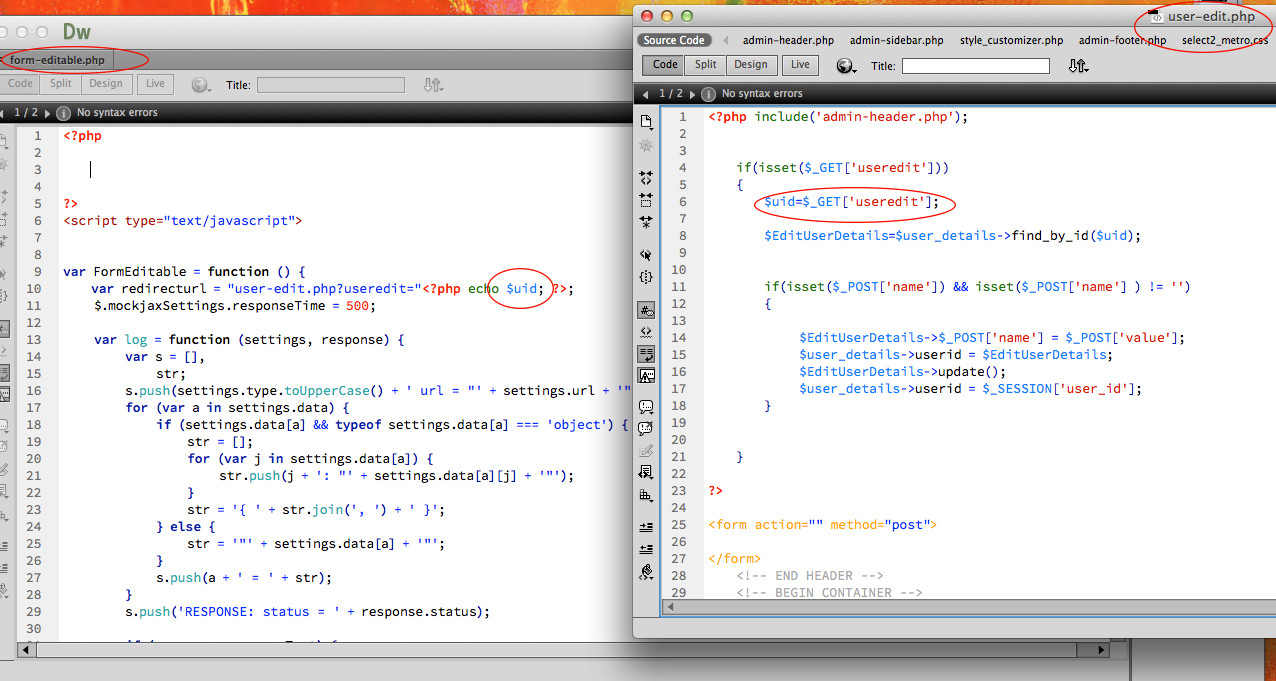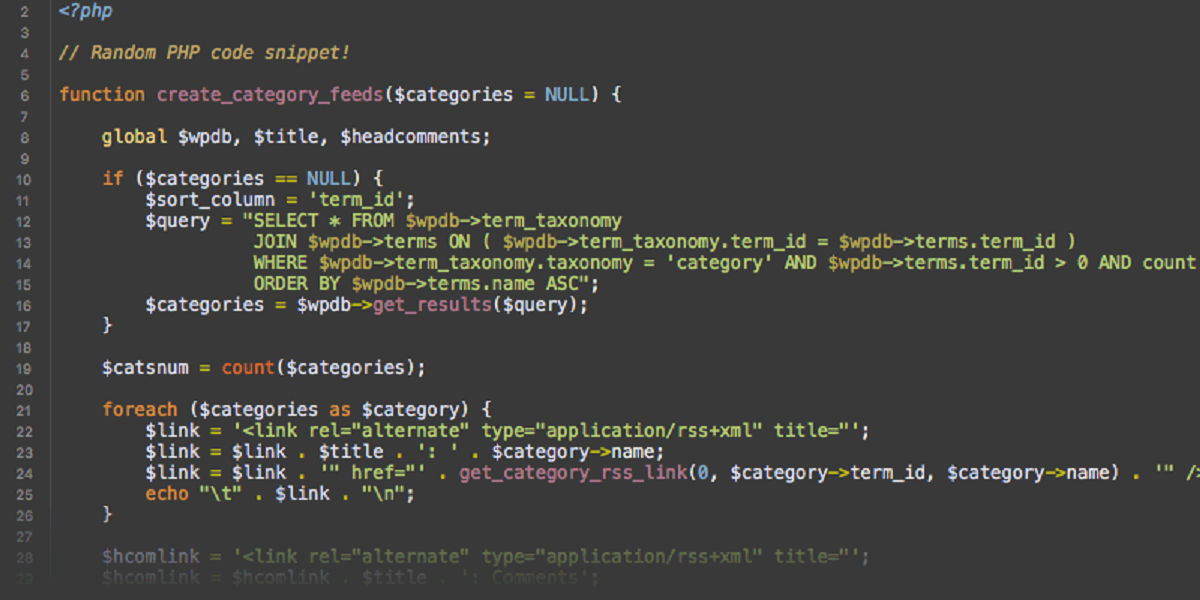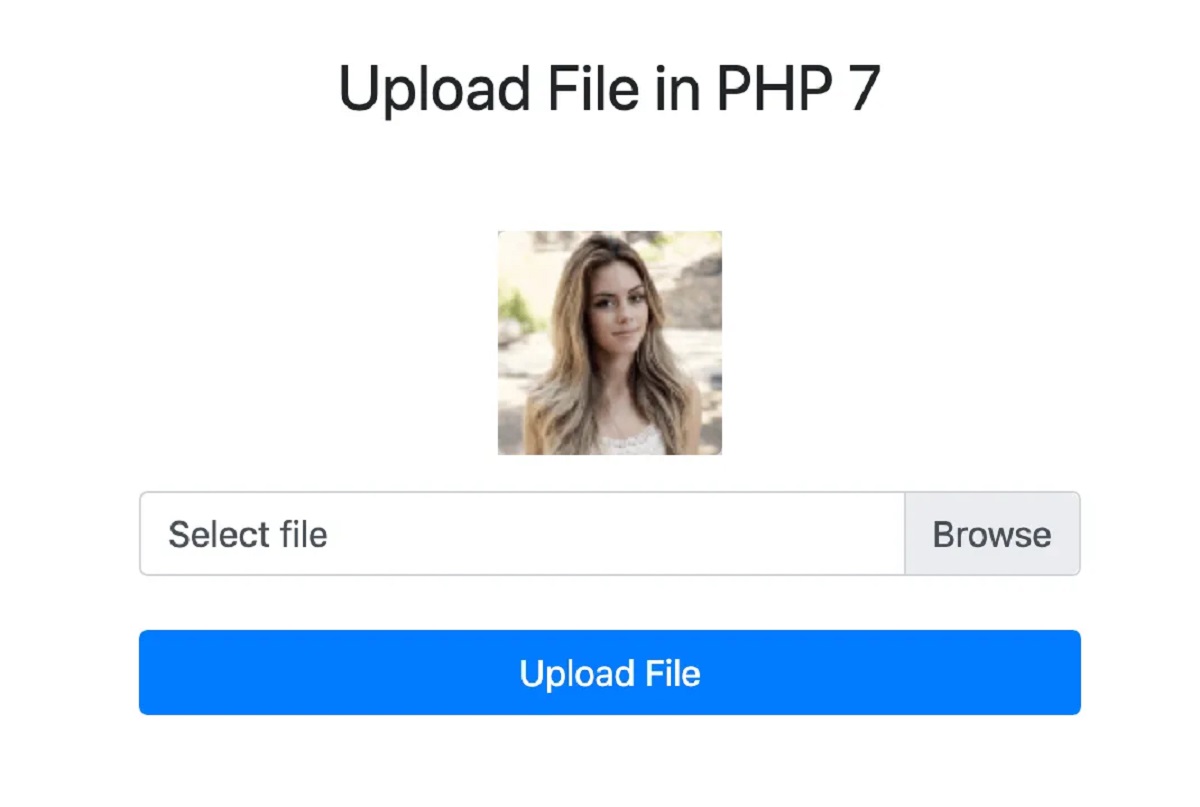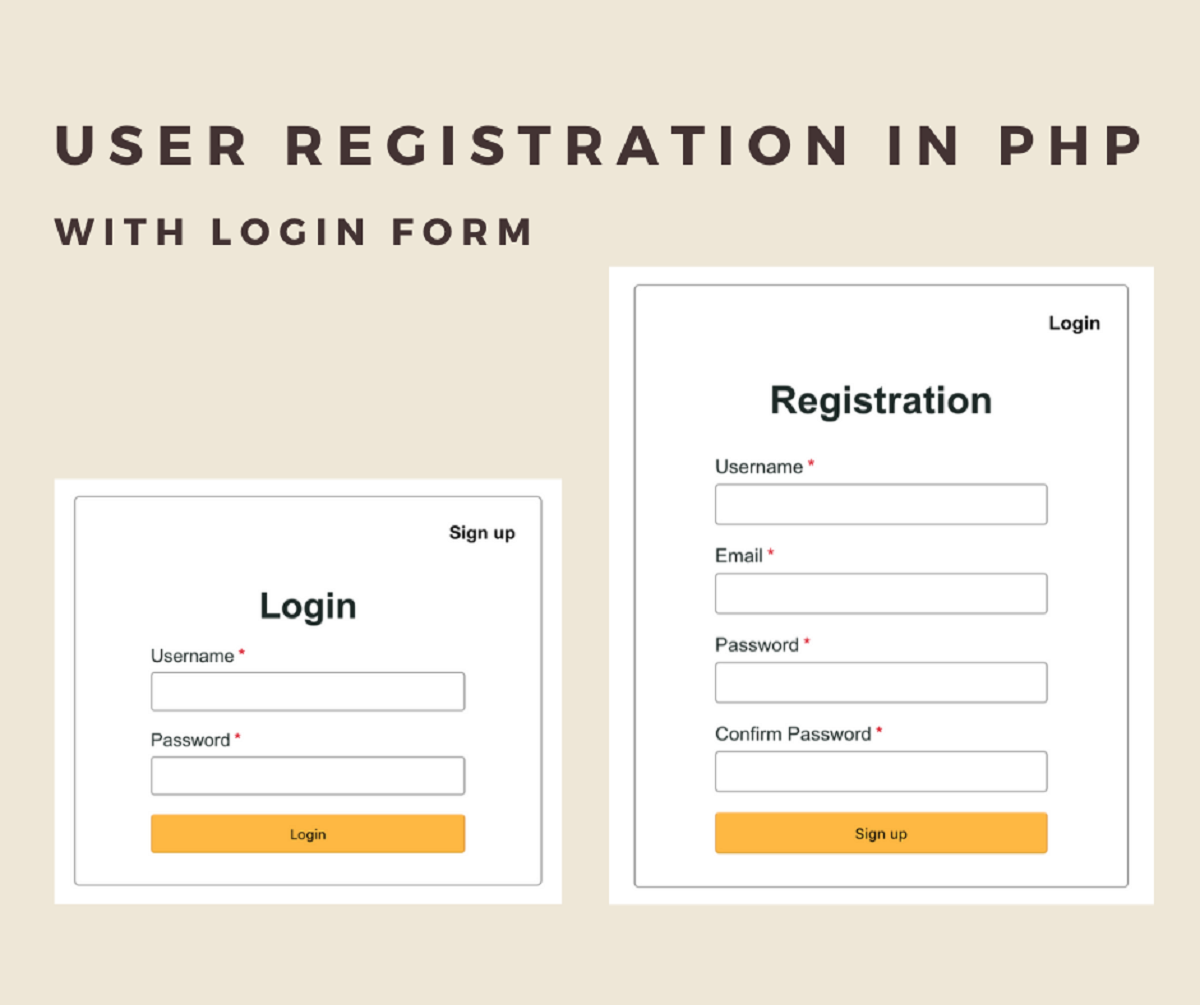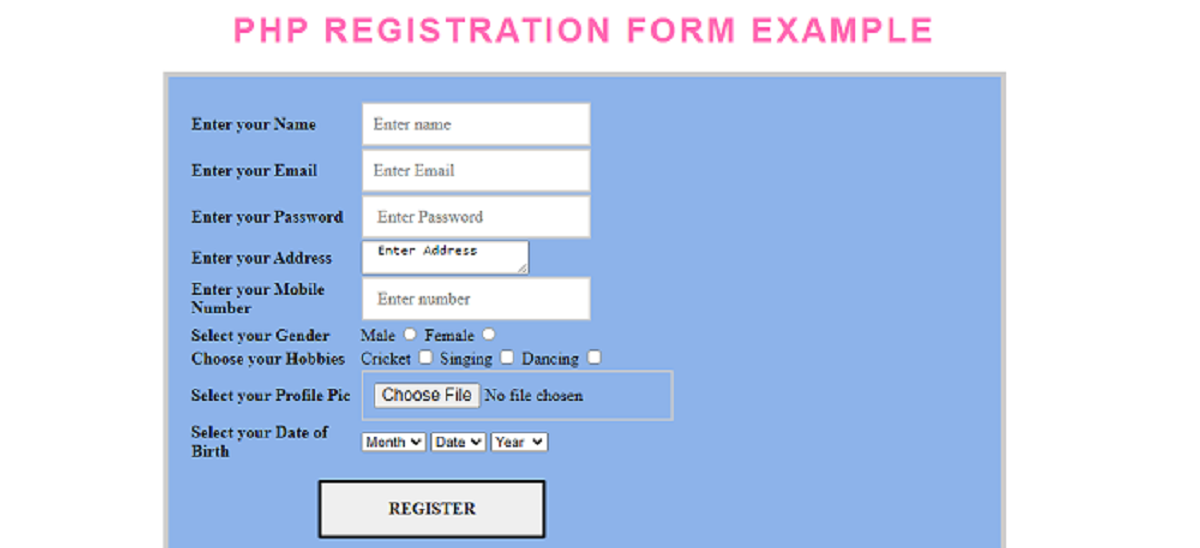Introduction
Welcome to this guide on how to get POST variables in PHP. If you’re familiar with PHP, you probably know that it is a server-side scripting language that is widely used for web development. When it comes to handling form submissions, PHP provides powerful tools to retrieve the data submitted through HTML forms. In particular, PHP has an inbuilt variable called $_POST that allows you to access the POST variables sent by the browser.
In this article, we will explore how to use the $_POST variable to retrieve form data in PHP. We will cover various scenarios, such as accessing individual POST variables, handling arrays in the $_POST variable, and dealing with file uploads using the $_FILES variable.
Before we dive into the details, it’s important to understand the concept of POST variables. When a user submits a form on a website, the data entered into the form fields is sent to the server using an HTTP POST request. This data is then made available to the server-side scripting language (in this case, PHP) for further processing.
The $_POST variable is an associative array that contains all the POST variables sent by the browser. Each POST variable is represented as a key-value pair, where the key is the name attribute of the corresponding form field and the value is the data submitted by the user.
Now that we have a basic understanding of POST variables and the role of the $_POST variable in PHP, let’s dive into the details of how to use this variable to retrieve and handle form data. By the end of this article, you will have a clear understanding of how to work with POST variables in PHP and be ready to handle form submissions in your PHP-based web applications.
Understanding Inbuilt Variables in PHP
Before we get into retrieving POST variables in PHP, let’s take a moment to understand the concept of inbuilt variables. In PHP, there are several inbuilt variables that are automatically available to your scripts, without the need to define or initialize them. These variables provide valuable information about the server, the request, and the environment in which your PHP code is running.
One such inbuilt variable is $_POST. This variable, as mentioned earlier, is an associative array that contains all the POST variables sent by the browser. It is automatically populated by PHP with the form data when a POST request is made to the server.
In addition to $_POST, there are other commonly used inbuilt variables in PHP, such as $_GET, $_REQUEST, $_SERVER, and $_COOKIE. Each of these variables has a specific purpose and contains different types of information.
The $_GET variable is used to retrieve GET variables, which are the parameters appended to the URL of a page. For example, if the URL is “example.com?page=about”, you can access the value of the “page” parameter using $_GET[‘page’]. The $_REQUEST variable is a combined array that contains both GET and POST variables. It is less commonly used compared to $_GET and $_POST, as it can lead to security risks if not handled properly.
The $_SERVER variable contains information about the server and the current request, such as the URL, request method, user agent, and more. It can be useful for debugging and logging purposes, as well as for building dynamic applications that adapt based on the request information.
The $_COOKIE variable is used to retrieve HTTP cookies sent by the browser. Cookies are small pieces of data stored on the user’s computer and can be used to persist information between requests.
Understanding these inbuilt variables in PHP is essential for effective web development. By leveraging these variables, you can access and manipulate the information passed between the client and the server, enabling dynamic and interactive web applications.
Now that we have discussed the concept of inbuilt variables in PHP, let’s move on to the next section, where we will explore how to use the $_POST variable to retrieve specific POST variables in PHP.
Using $_POST Variable to Get POST Variables
Now that we understand the concept of POST variables and inbuilt variables in PHP, let’s dive into using the $_POST variable to get the POST variables submitted through a form.
When a user submits a form, the data is sent to the server as a POST request. PHP automatically populates the $_POST variable with the form data, making it accessible in your PHP script. To retrieve a specific POST variable, you can use the $_POST array with the name attribute of the corresponding form field as the key.
For example, suppose you have a form with a text input field named “username”. To retrieve the value of this input field in your PHP script, you can use the following code:
$username = $_POST[‘username’];
The value of the “username” POST variable will be stored in the variable $username, which you can then use for further processing.
It’s important to note that the keys of the $_POST array correspond to the name attributes of the form fields, not the ids or any other attributes. So, make sure the name attributes of your form fields match the keys you are using to access the POST variables.
If a form contains multiple input fields, each with a unique name attribute, you can retrieve their values in a similar way. Simply use $_POST with the corresponding field names as keys. For example:
$name = $_POST[‘name’];
$email = $_POST[’email’];
In this example, the variables $name and $email will be populated with the values of the “name” and “email” input fields.
Remember to sanitize and validate the input before using it in your application to prevent security vulnerabilities and ensure data integrity.
Now that you know how to retrieve individual POST variables using the $_POST variable, let’s move on to the next section, where we will explore how to handle arrays in the $_POST variable.
Accessing Individual POST Variables
When working with forms, it’s common to have multiple input fields with different names. In PHP, you can easily access individual POST variables based on their names using the $_POST superglobal variable.
To access a specific POST variable, you can use the name attribute of the corresponding form field as the key in the $_POST array. For example, if you have a form field with the name attribute set to “email”, you can retrieve its value like this:
php
$email = $_POST[’email’];
The value submitted by the user in the “email” field will be stored in the variable $email. You can then use this variable in your PHP script for further processing or validation.
If you have multiple input fields with different names, you can access each of them in a similar way. Simply use the corresponding name attribute as the key in the $_POST array. For example:
php
$name = $_POST[‘name’];
$age = $_POST[‘age’];
In this example, the values submitted in the “name” and “age” fields will be stored in the variables $name and $age, respectively.
It’s worth noting that the values retrieved from the $_POST array are always of string type. If your form contains fields that expect numeric or other specific types of data, you may need to manually convert the values to the desired type using functions like intval() or floatval().
In addition, it’s important to validate and sanitize the input received from the user. Form input can be manipulated, so it’s crucial to ensure the data is safe and conforms to the expected format.
By accessing individual POST variables using the $_POST array, you can easily retrieve and work with the data submitted through HTML forms in PHP. Now that you know how to access individual POST variables, let’s move on to the next section, where we will explore how to handle arrays in the $_POST variable.
Handling Arrays in $_POST
Form submissions can often involve arrays, especially when dealing with checkboxes, multiple select inputs, or dynamically generated form fields. In PHP, you can easily handle arrays within the $_POST superglobal variable.
When a form field has multiple values, the $_POST variable treats it as an array automatically. For example, if you have a checkbox group with the name attribute set to “colors[]”, you can access its values as an array in PHP:
php
$selectedColors = $_POST[‘colors’];
The variable $selectedColors will now hold an array containing the selected values from the “colors[]” checkbox group.
Similarly, if you have a multiple select input with the name attribute set to “fruits[]”, you can access the selected values as an array:
php
$selectedFruits = $_POST[‘fruits’];
In this case, the variable $selectedFruits will store an array with the selected fruit values from the “fruits[]” select input.
You can also handle dynamically generated form fields that result in arrays in the $_POST variable. For example, if you have multiple inputs with the name pattern “items[]”, where each input represents an item in a shopping cart, you can retrieve the values as an array:
php
$cartItems = $_POST[‘items’];
The variable $cartItems will now contain an array with all the values submitted in the “items[]” input fields.
Keep in mind that when working with arrays in the $_POST variable, the keys of the array are the index positions of the corresponding form fields. If you need to preserve specific keys or want to use associative arrays, you can specify custom keys for the form fields in your HTML, like “fruit[1]”, “fruit[2]”, and so on:
html
In PHP, you can access these associative array elements using the same key in the $_POST array:
php
$fruit1 = $_POST[‘fruit’][1];
$fruit2 = $_POST[‘fruit’][2];
By handling arrays within the $_POST superglobal variable, you can easily manage form submissions with multiple values or dynamically generated form fields in PHP. Now that we have covered handling arrays in the $_POST variable, let’s move on to the next section, where we will discuss how to handle file uploads using the $_FILES variable.
Dealing with File Uploads using $_FILES
When working with forms, you may often come across scenarios where users need to upload files to your web application. PHP provides the $_FILES superglobal variable to handle file uploads effectively.
When a file is uploaded through a form, it is stored temporarily on the server and made accessible through the $_FILES variable. The $_FILES variable is an associative array that contains information about the uploaded file, such as its name, type, size, and temporary location.
To access the uploaded file, you can use the name attribute of the file input field as the key in the $_FILES array. For example, if your file input has the name attribute set to “avatar”, you can retrieve the file information like this:
php
$uploadedFile = $_FILES[‘avatar’];
The $uploadedFile variable will now hold an array with the details of the uploaded file.
The $_FILES array has several keys that can be used to access specific information about the uploaded file:
- ‘name’: The original name of the file.
- ‘type’: The MIME type of the file.
- ‘size’: The size of the file in bytes.
- ‘tmp_name’: The temporary location of the uploaded file on the server.
- ‘error’: An error code, if any, that occurred during the file upload process.
You can access these individual elements of the file information by using the corresponding keys in the $uploadedFile array. For example:
php
$fileName = $uploadedFile[‘name’];
$fileType = $uploadedFile[‘type’];
$fileSize = $uploadedFile[‘size’];
In addition to accessing the file information, you can also move the uploaded file to a permanent location on your server using the move_uploaded_file() function. This function takes two parameters – the temporary file path and the destination path where you want to save the file.
It’s important to note that you need to make sure the destination folder has the appropriate permissions set to allow file uploads and avoid any potential security vulnerabilities.
By utilizing the $_FILES superglobal variable, you can easily handle file uploads in PHP. Now that we have covered dealing with file uploads, let’s move on to the next section, where we will discuss common pitfalls and troubleshooting techniques related to POST variables in PHP.
Common Pitfalls and Troubleshooting
Working with POST variables in PHP can sometimes lead to common pitfalls and issues. It’s important to be aware of these and know how to troubleshoot them. Let’s explore a few common pitfalls and some troubleshooting techniques:
Undefined Index Error: One common error you may encounter is the “Undefined index” error. This occurs when you try to access a key in the $_POST array that doesn’t exist. To prevent this error, always check if the key exists before accessing it. You can use the isset() function to check if a key is set in the $_POST array before using it.
Working with Checkbox Inputs: When dealing with checkboxes, it’s important to remember that if a checkbox is not selected, it will not be included in the POST data. To check if a checkbox is selected, you can use the isset() function with the corresponding checkbox name as the key in the $_POST array.
File Upload Issues: When handling file uploads, there are a few potential issues to be aware of. Make sure the form has the enctype attribute set to “multipart/form-data” to handle file uploads properly. Additionally, verify that the upload_max_filesize and post_max_size directives in your php.ini file are set to accommodate the file sizes you expect to receive. If you encounter file upload errors, such as UPLOAD_ERR_NO_FILE or UPLOAD_ERR_PARTIAL, refer to the error code provided in the $_FILES array to determine the cause of the issue.
Data Validation and Sanitization: Always validate and sanitize the data received from forms to prevent security vulnerabilities and ensure data integrity. Use functions like filter_var() or regular expressions to sanitize input and validate it according to the expected format.
Debugging with var_dump(): When troubleshooting POST variables, it can be helpful to use the var_dump() function to inspect the contents of the $_POST array and individual POST variables. This will help you identify any data inconsistencies or unexpected values that may be causing issues.
Server Configuration: Finally, if you are experiencing persistent issues with POST variables not being sent or received correctly, it’s worth checking the server configuration. Make sure that the server is properly configured to allow POST requests and that there are no restrictions or security settings in place that may interfere with the processing of POST data.
By being aware of these common pitfalls and troubleshooting techniques, you can effectively handle any issues that may arise when working with POST variables in PHP. Now that we have covered some key troubleshooting techniques, let’s conclude our discussion on handling POST variables in PHP.
Conclusion
In this guide, we have explored how to effectively handle POST variables in PHP. We started by understanding the concept of inbuilt variables in PHP and learned about the $_POST superglobal variable that is specifically used for retrieving POST variables.
We explored how to access individual POST variables by using the name attribute of the corresponding form fields as keys in the $_POST array. We also discussed how to handle arrays within the $_POST variable, which is useful when dealing with checkboxes, multiple select inputs, or dynamically generated form fields.
In addition, we covered the $_FILES superglobal variable and its usage for handling file uploads in PHP. We discussed how to access file information and move uploaded files to a permanent location on the server.
To ensure smooth handling of POST variables, we addressed common pitfalls and provided troubleshooting techniques. We emphasized the importance of validating and sanitizing input data to maintain security and data integrity.
By following these guidelines and best practices, you can effectively retrieve and process POST variables in PHP, enabling you to create dynamic and interactive web applications that efficiently handle user input.
Remember, PHP provides a powerful set of tools for working with forms and processing user-submitted data. Understanding how to use $_POST, $_GET, $_REQUEST, $_SERVER, and $_COOKIE variables will greatly enhance your ability to create robust web applications.
Now that you have a solid understanding of handling POST variables in PHP, go ahead and take your knowledge to the next level by building your own web forms and leveraging the power of PHP to process user input. Happy coding!







